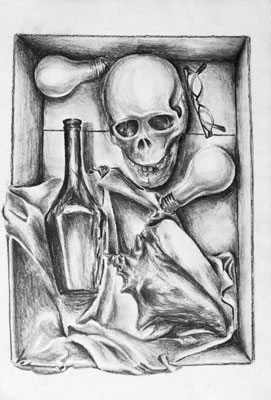All Nonfiction
- Bullying
- Books
- Academic
- Author Interviews
- Celebrity interviews
- College Articles
- College Essays
- Educator of the Year
- Heroes
- Interviews
- Memoir
- Personal Experience
- Sports
- Travel & Culture
All Opinions
- Bullying
- Current Events / Politics
- Discrimination
- Drugs / Alcohol / Smoking
- Entertainment / Celebrities
- Environment
- Love / Relationships
- Movies / Music / TV
- Pop Culture / Trends
- School / College
- Social Issues / Civics
- Spirituality / Religion
- Sports / Hobbies
All Hot Topics
- Bullying
- Community Service
- Environment
- Health
- Letters to the Editor
- Pride & Prejudice
- What Matters
- Back
Summer Guide
- Program Links
- Program Reviews
- Back
College Guide
- College Links
- College Reviews
- College Essays
- College Articles
- Back
Food For Thought. part 2.
Architecture, the construction, the building and planning of an elaborate design per whatever our hearts desire or our necessities so demand. Let us break this definition down into something more simple and streamlined. Perhaps you are of a young age and happen upon a sandy beach. Would it not be the inquisitive nature to want to build a sandcastle? Such a simple construction in it's own right could easily be refined into something more complicated and supreme in it's design yes? So let us branch out into a further concept of understanding. Instead of plummeting the fathoms of physical design let us speak of the cognitive. The human brain has but always been a mystery to our species. The brain is not something that can simply be analyzed and understood. Rather it is the second in command of almost all of our primary bodily functions. *second to the heart in importance* With over one hundred billion nerve cells along it's inner channels and pathways let us explore this complex phenomenon shall we?
As a whole, the three standard and most highly regarded of importance in the brain are the Central Core, the Limbic System, and the Cerebral Cortex. With this analysis we shall go in depth into how exactly these core mechanisms function
The Central Core is found in all vertebrates. Its five main regions help regulate basic life processes, including breathing, pulse, arousal, movement, balance, sleep, and the early stage of processing sensory information.
•
The Medulla is the center for breathing, waking, sleeping, and beating of the heart.
•
The Pons triggers dreaming and waking from sleep.
•
The Reticular Formation signals the cerebral cortex to attend to new stimulation and to remain alert even during sleep.
•
The Thalamus begins the process of interpreting sensory information. It determines fundamental properties, such as whether something is good or bad, and then forwards the information to the appropriate area of the cerebral cortex, where information processing continues.
•
The Cerebellum coordinates body movements, controls posture, and maintains equilibrium.
The Limbic System exists only in mammals. Its regions mediate motivated behaviors, emotional states, and memory processes. The limbic system also regulates body temperature, blood pressure, blood sugar level, and other housekeeping activities.
•
The Hippocampus plays an important role in emotion, learning, and memory.
•
The Amygdala plays a role in aggression, eating, drinking, and sexual behaviors.
•
The Hypothalamus monitors blood levels of glucose, salt, blood pressure, and hormones. It also helps to regulate processes in the body through its connection to the central and autonomic nervous systems and endocrine system.
The Cerebral Cortex directs the brain's higher cognitive and emotional functions. It is divided into two almost symmetrical halves called the cerebral hemispheres. Each hemisphere contains four lobes. Areas within these lobes oversee all forms of conscious experience, including perception, emotion, thought, and planning, as well as many unconscious cognitive and emotional processes.
•
The Frontal Lobe assists in motor control and cognitive activities, such as planning, making decisions, setting goals, and relating the present to the future through purposeful behavior.
•
The Parietal Lobe assists in sensory processes, spatial interpretation, attention, and language comprehension.
•
The Occipital Lobe processes visual information and passes its conclusions to the parietal and temporal lobes.
•
The Temporal Lobe assists in auditory perception, language comprehension, and visual recognition.
It is within my firm belief that through understanding and exploration of these mysteries of the human bran that elude us, and the facts with which science has already provided, We can build our own futures, our own destinies, and our own pathways in life. Let us build the simple sandcastles on the beach, the sky high towers of inner cities and let us not forget, to always build whatever we deem possible, with our brains. Never forget that the human mind, is the most powerful tool, weapon, and adversary alive. Quid pro quo I would rather know too much, than nothing at all

Similar Articles
JOIN THE DISCUSSION
This article has 0 comments.
